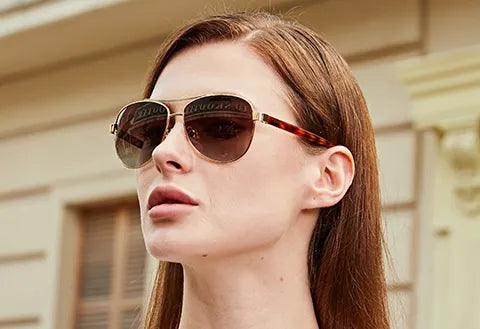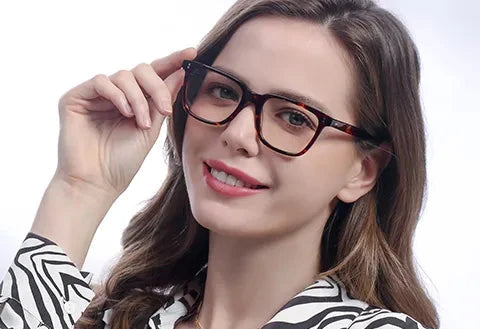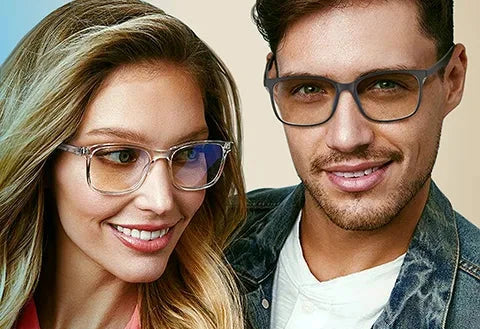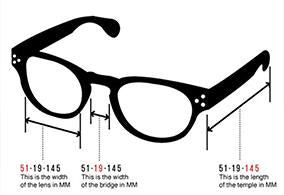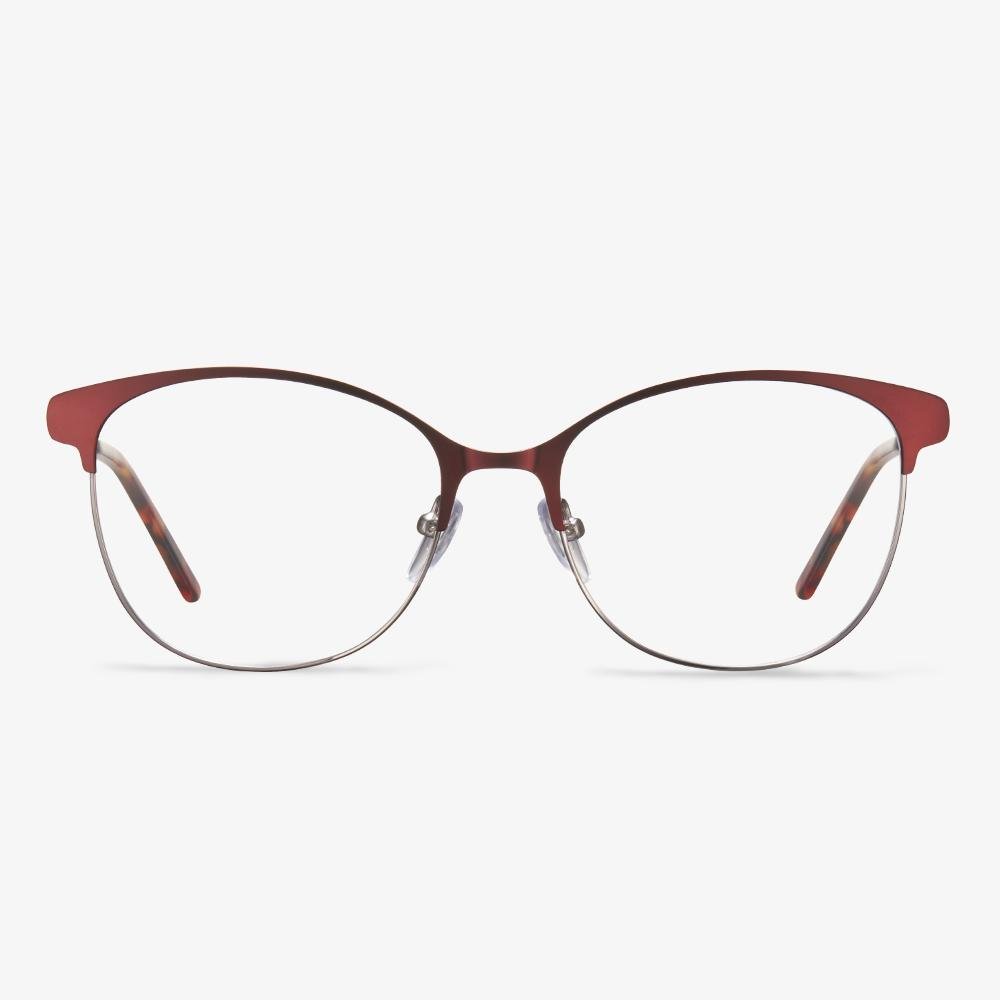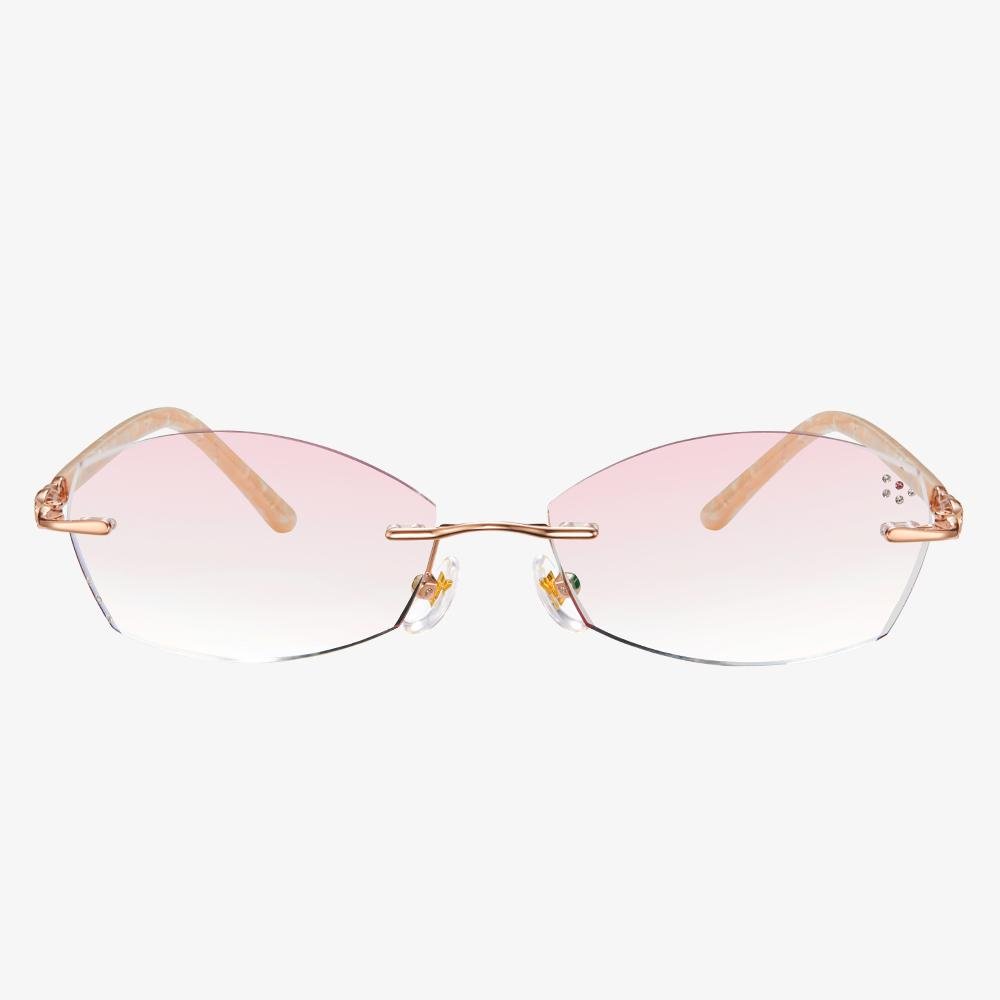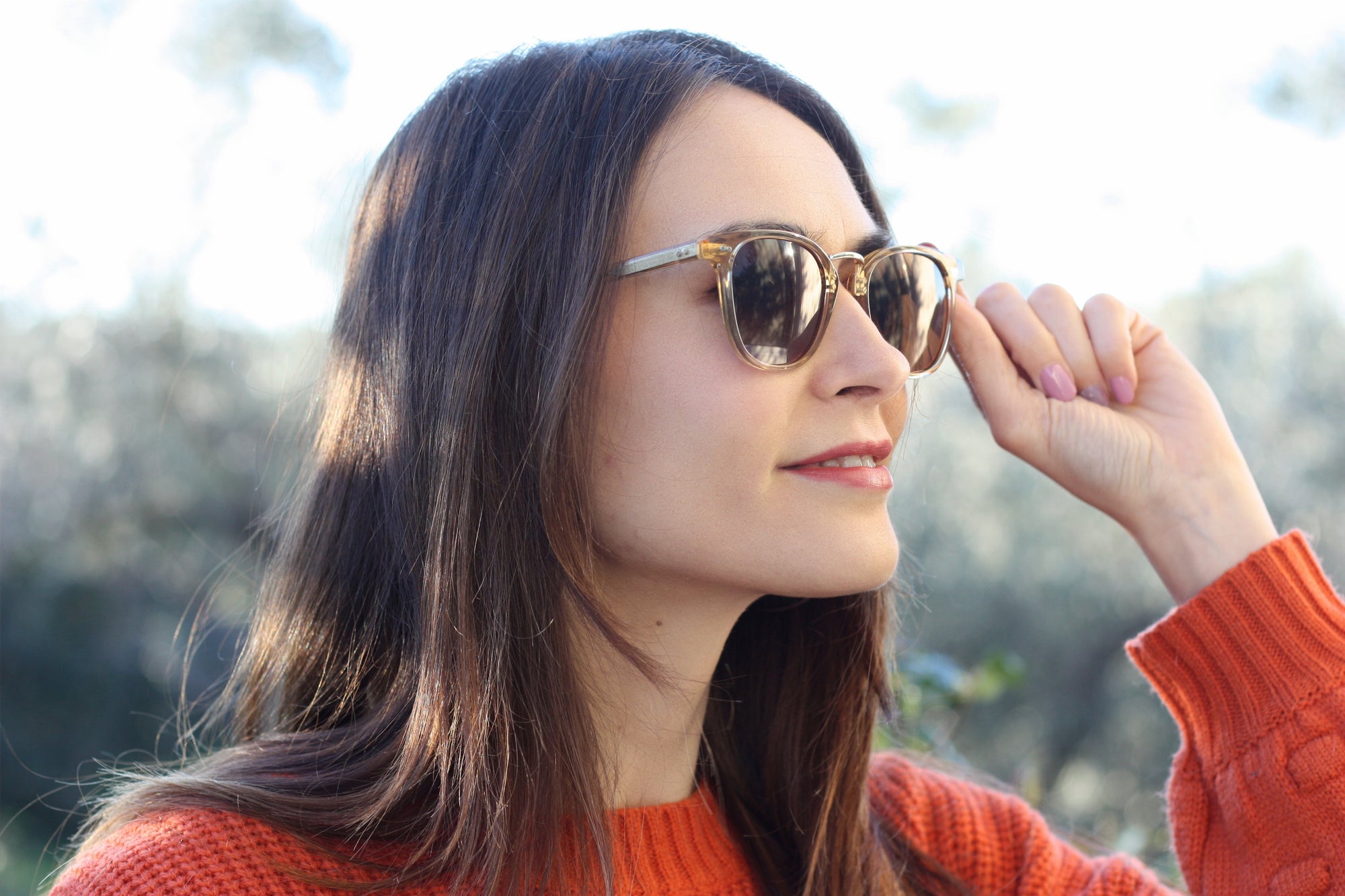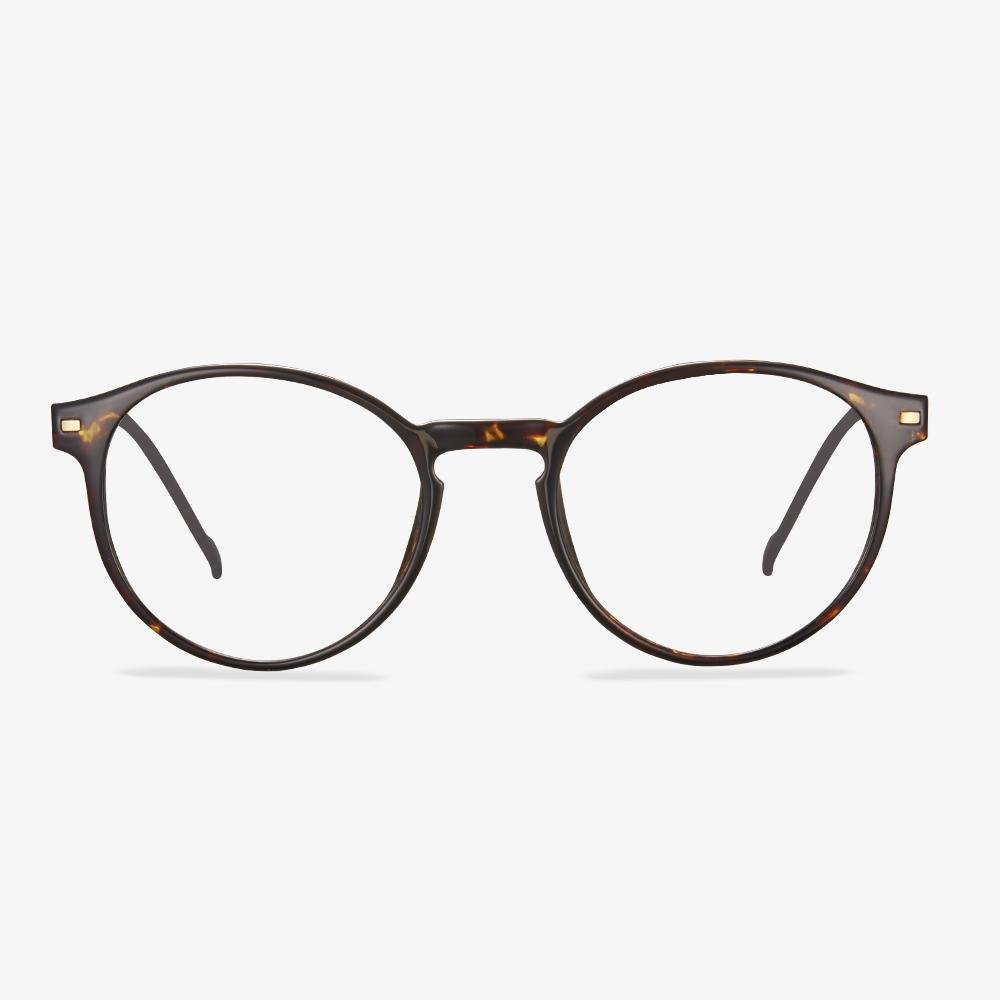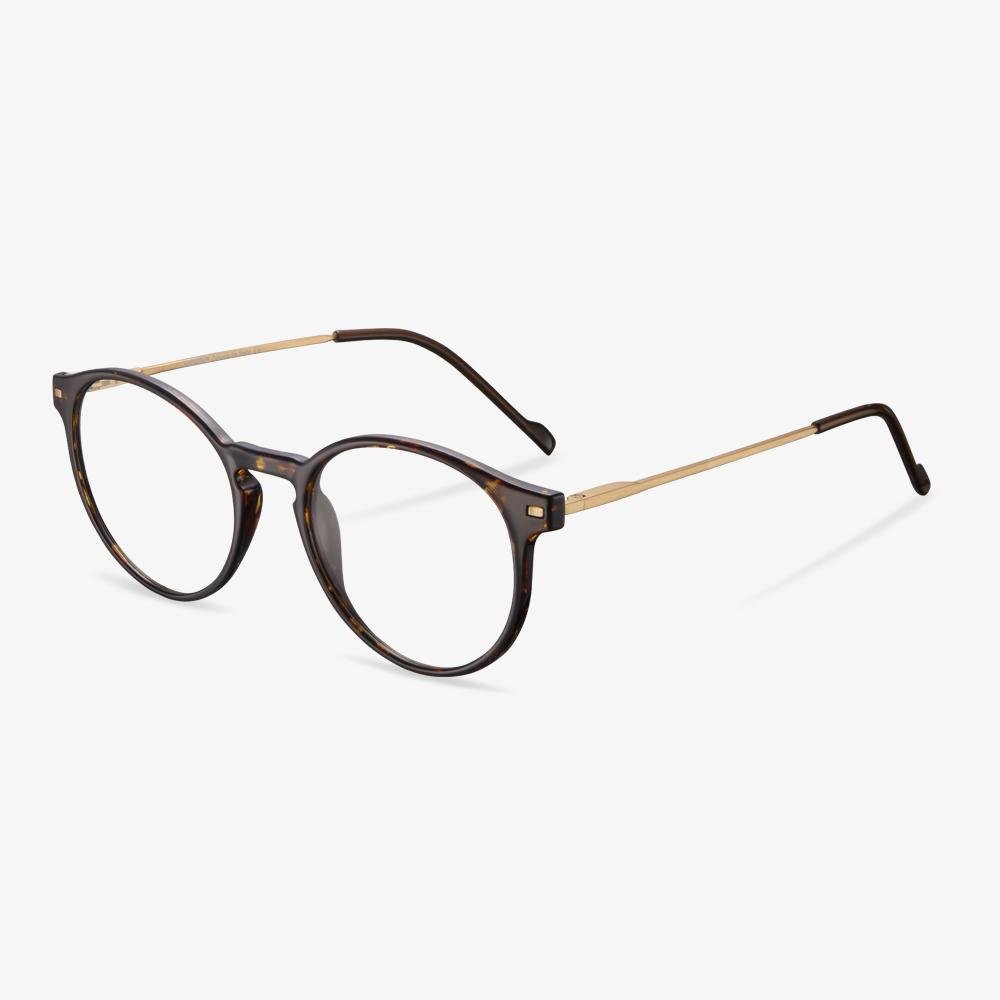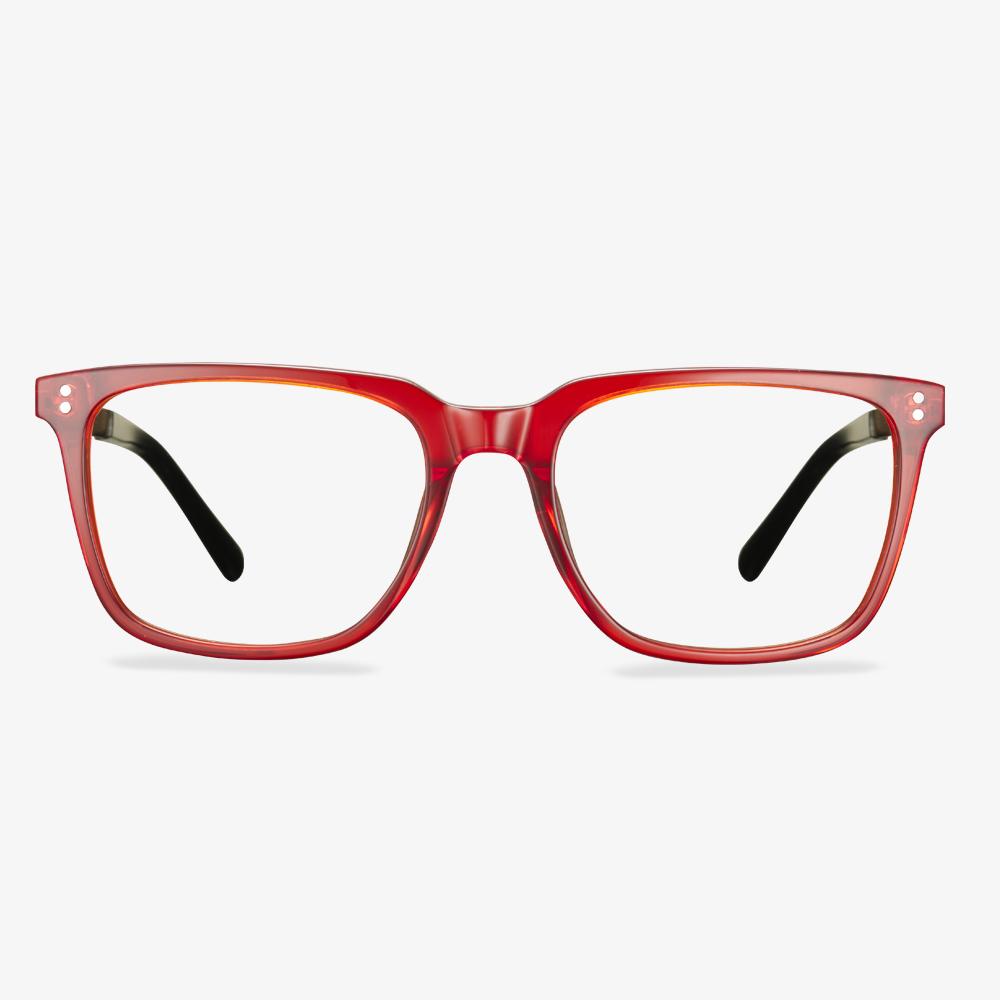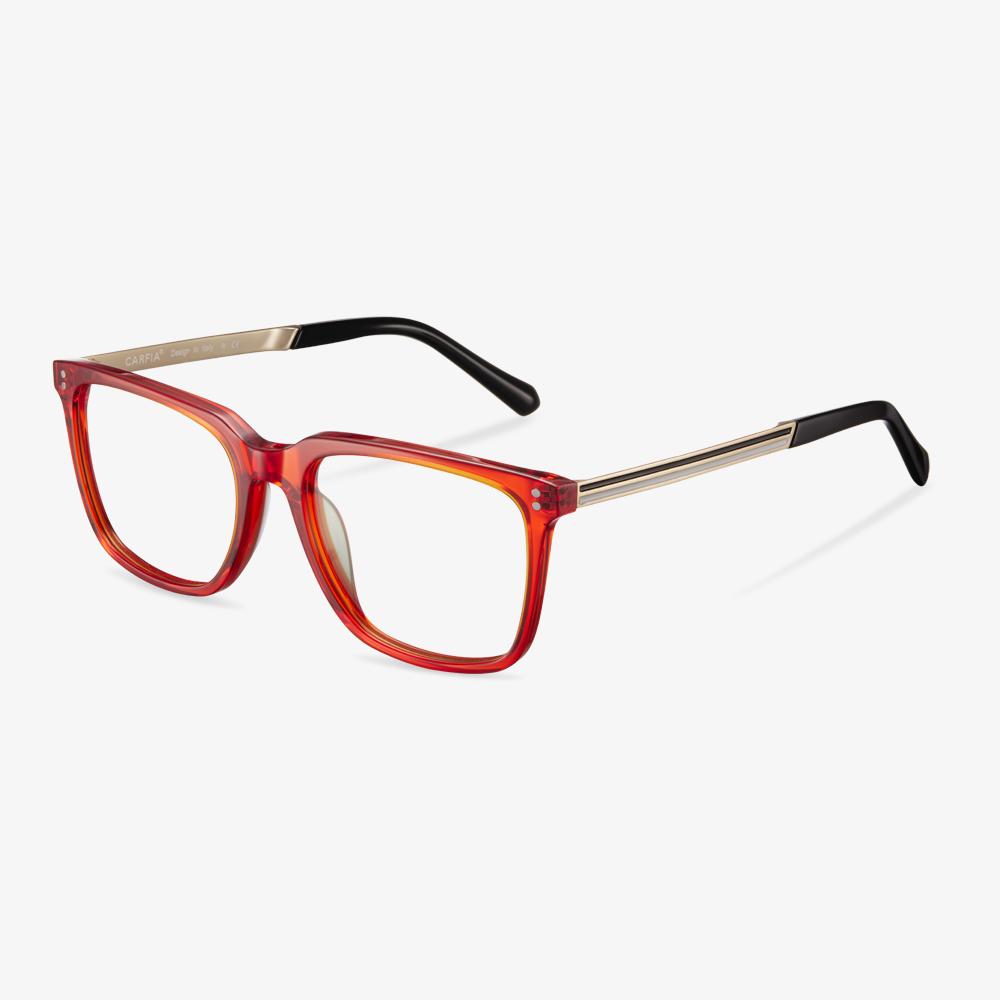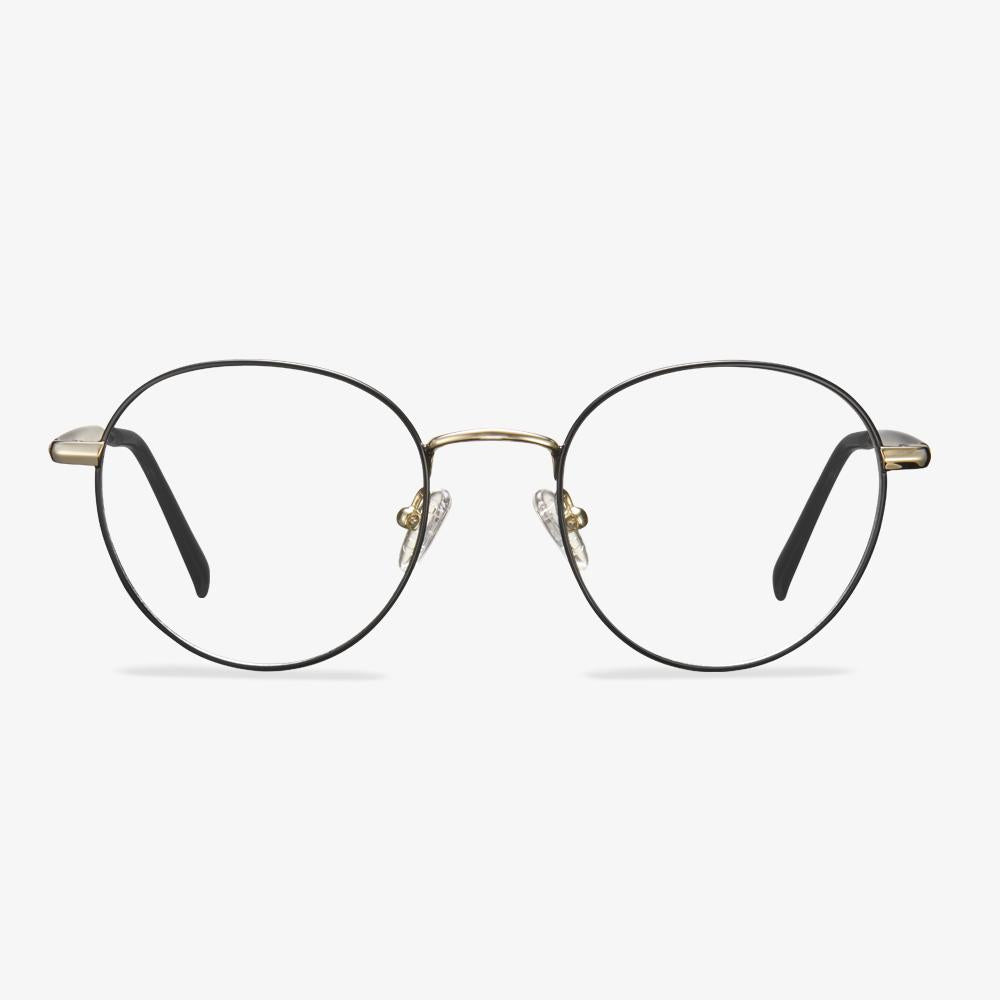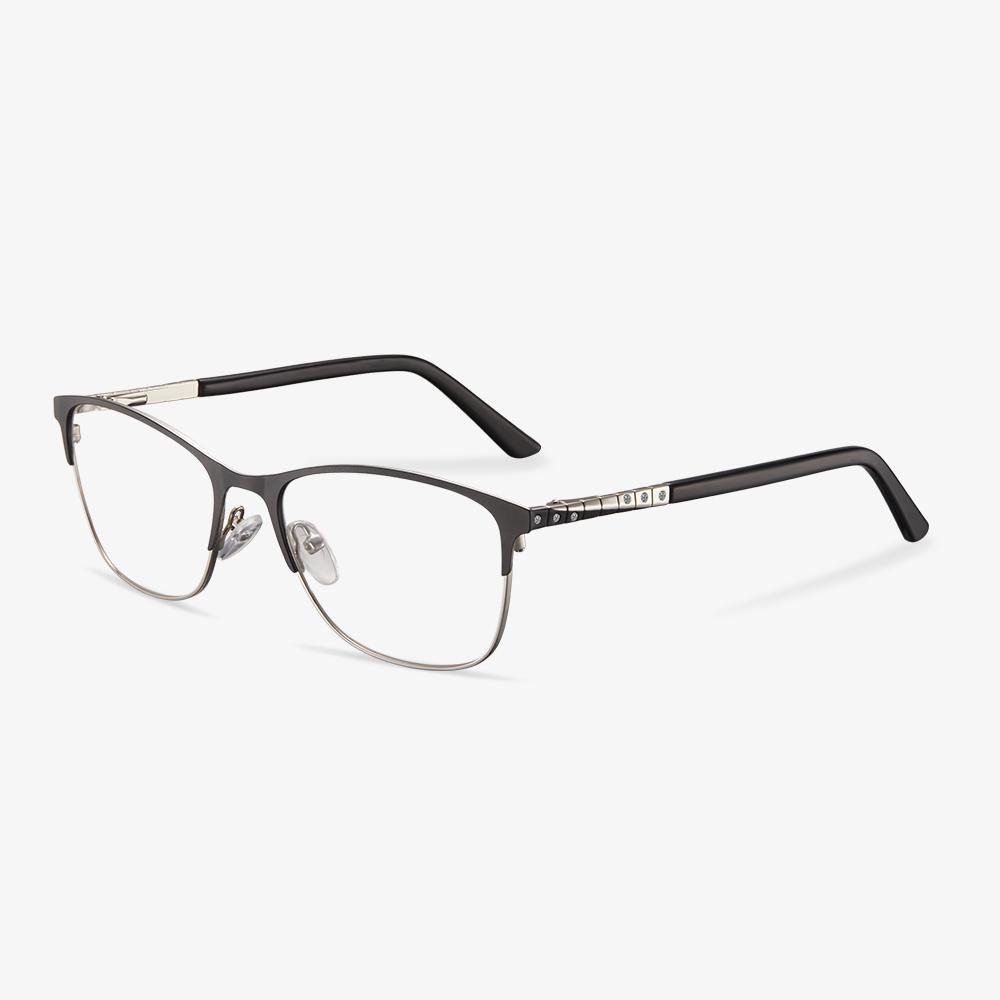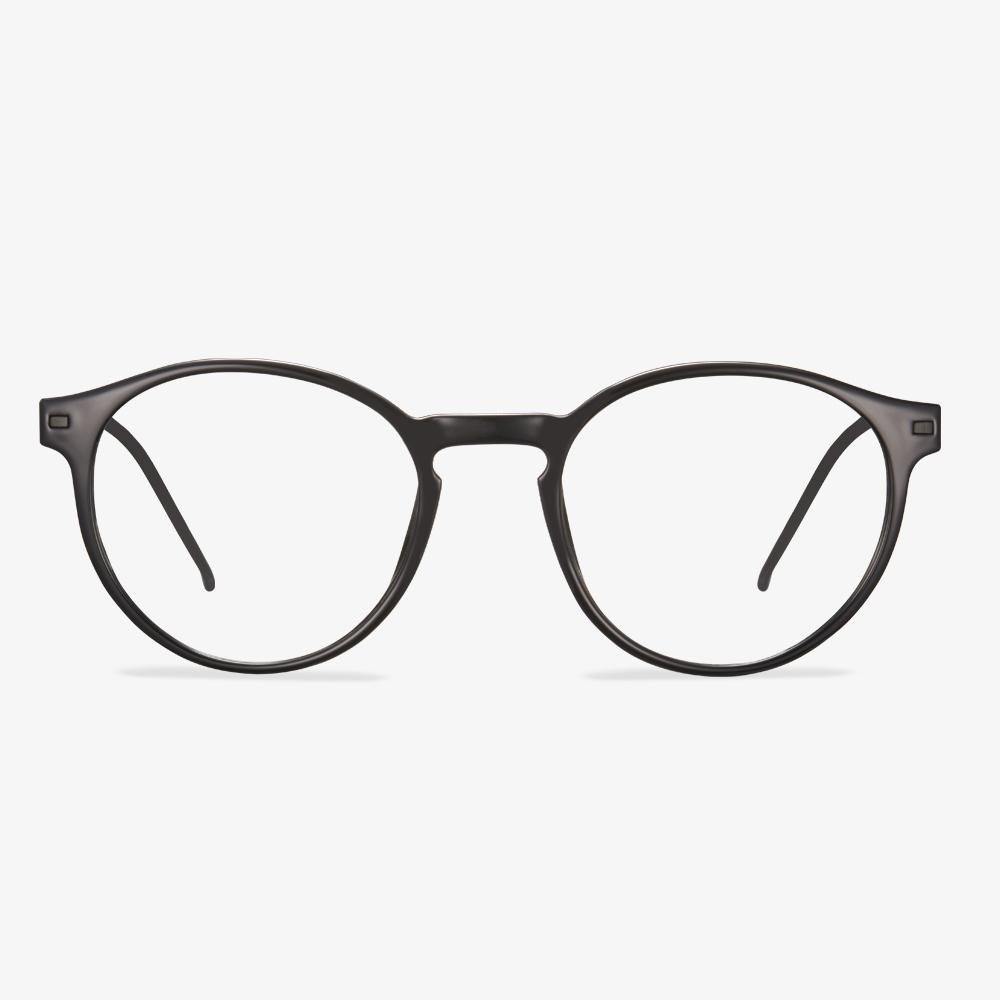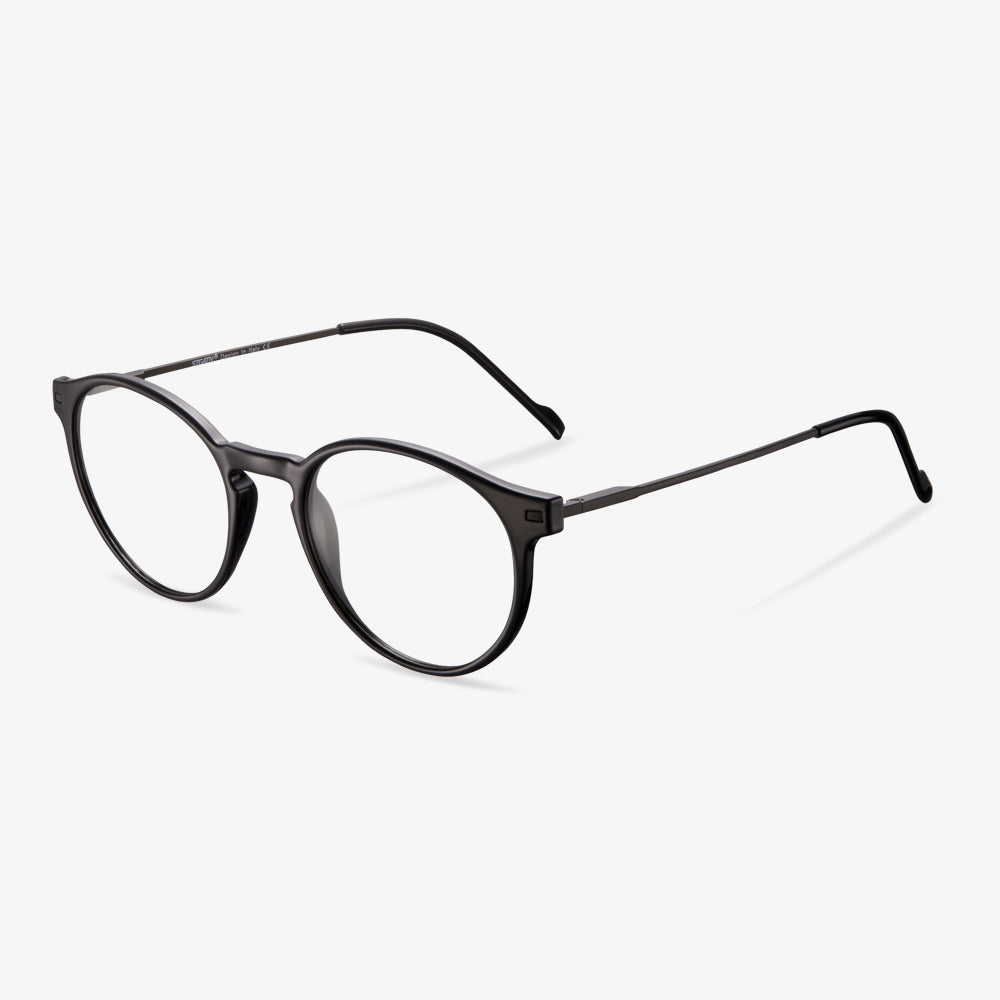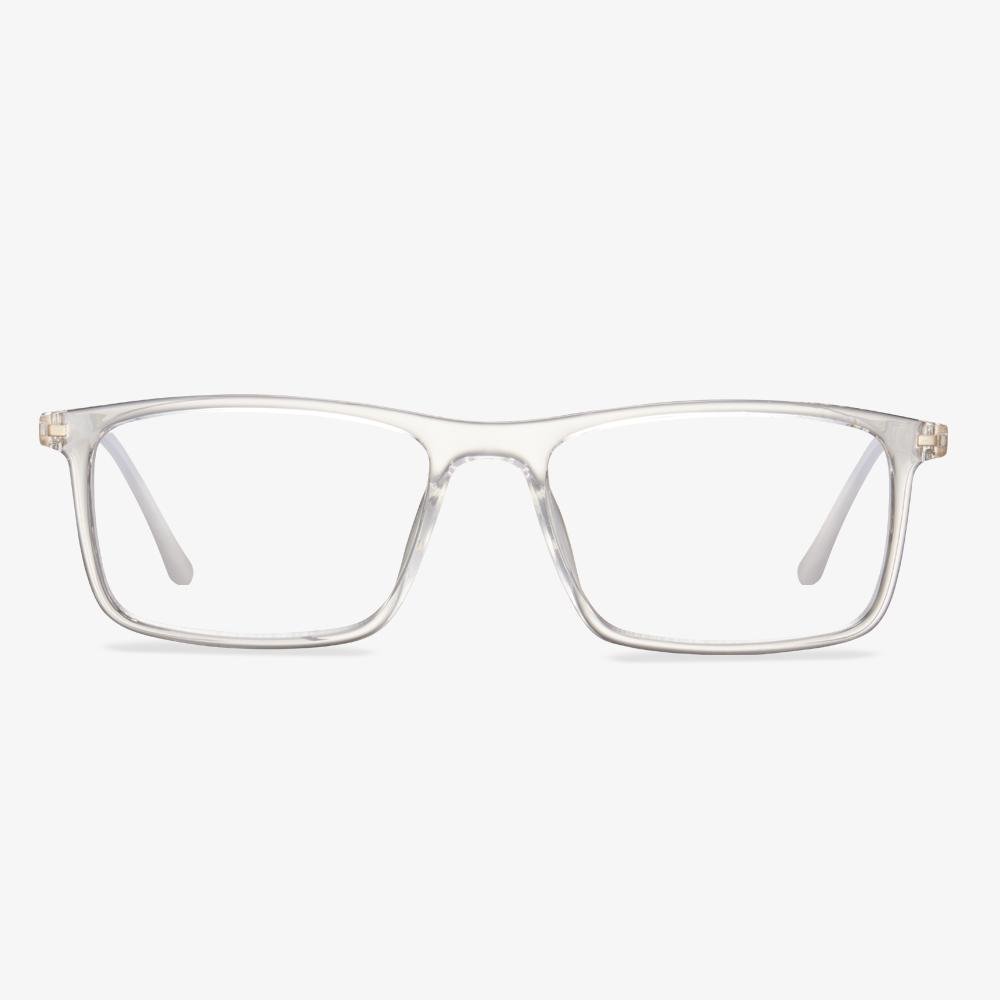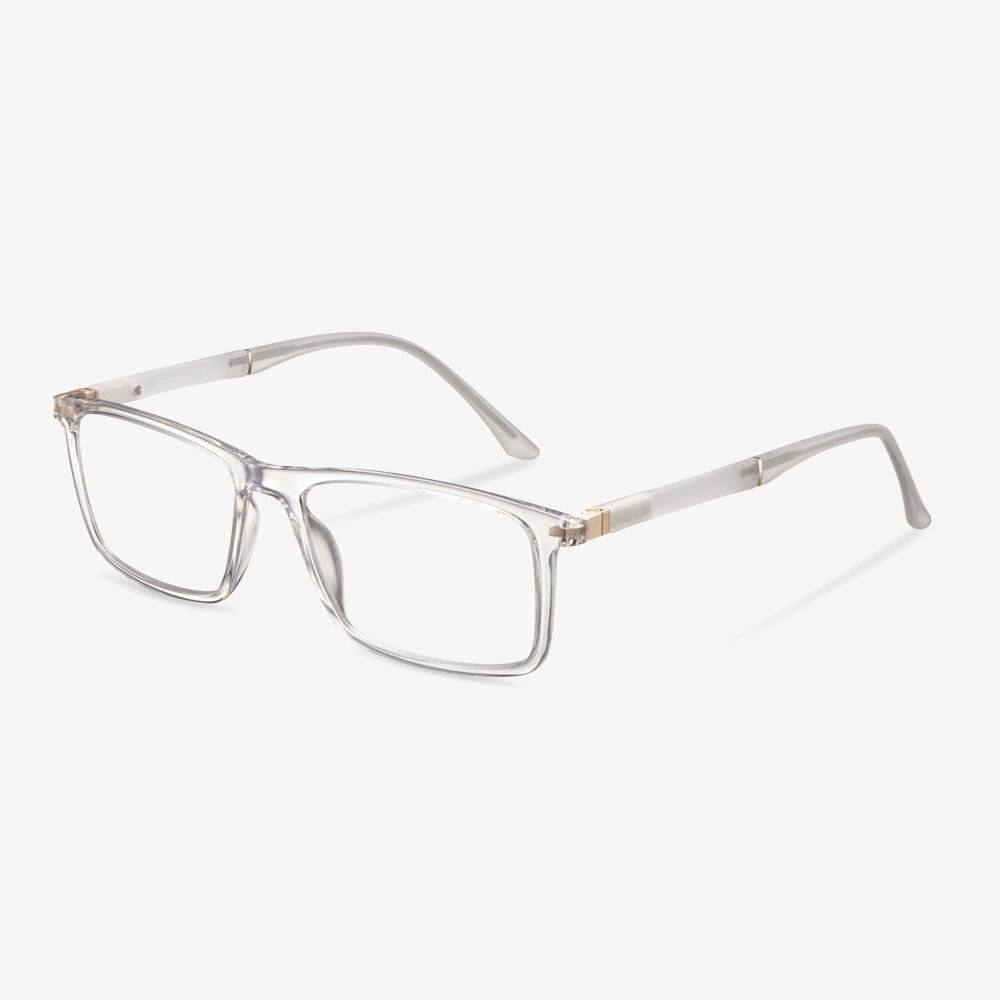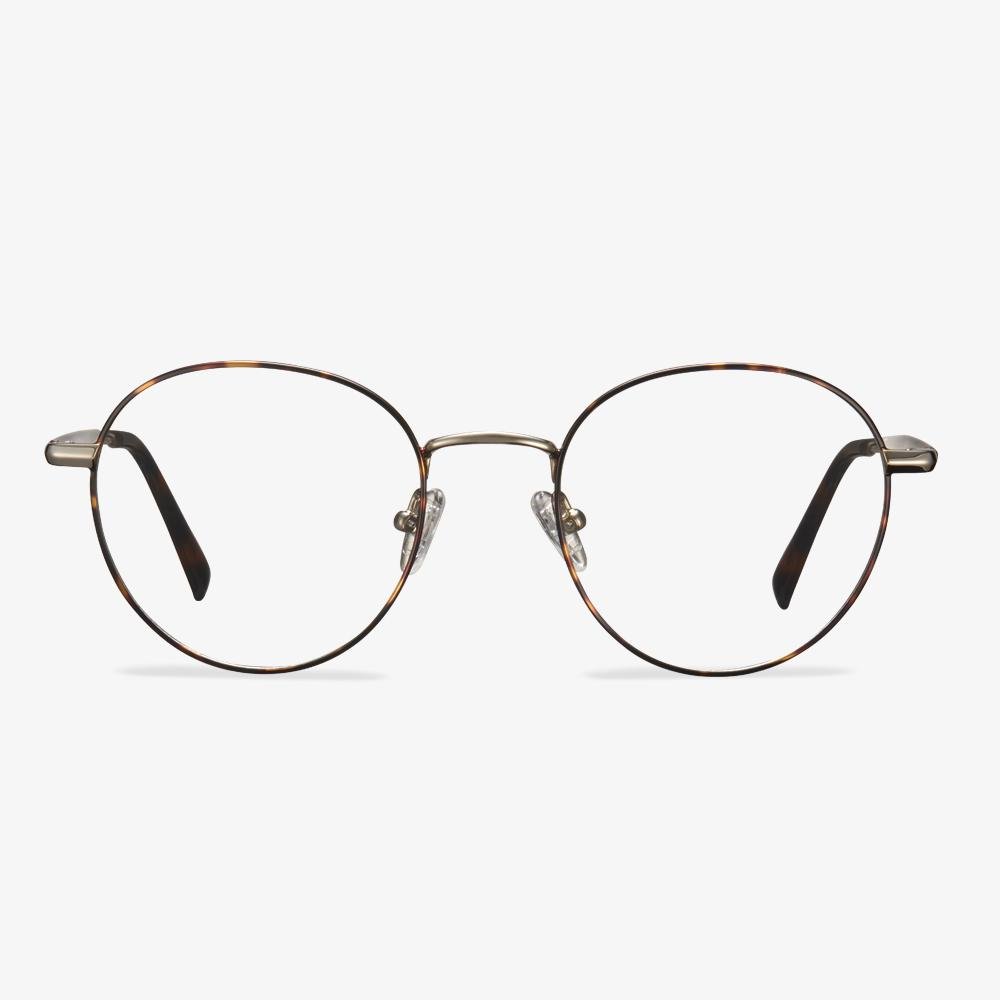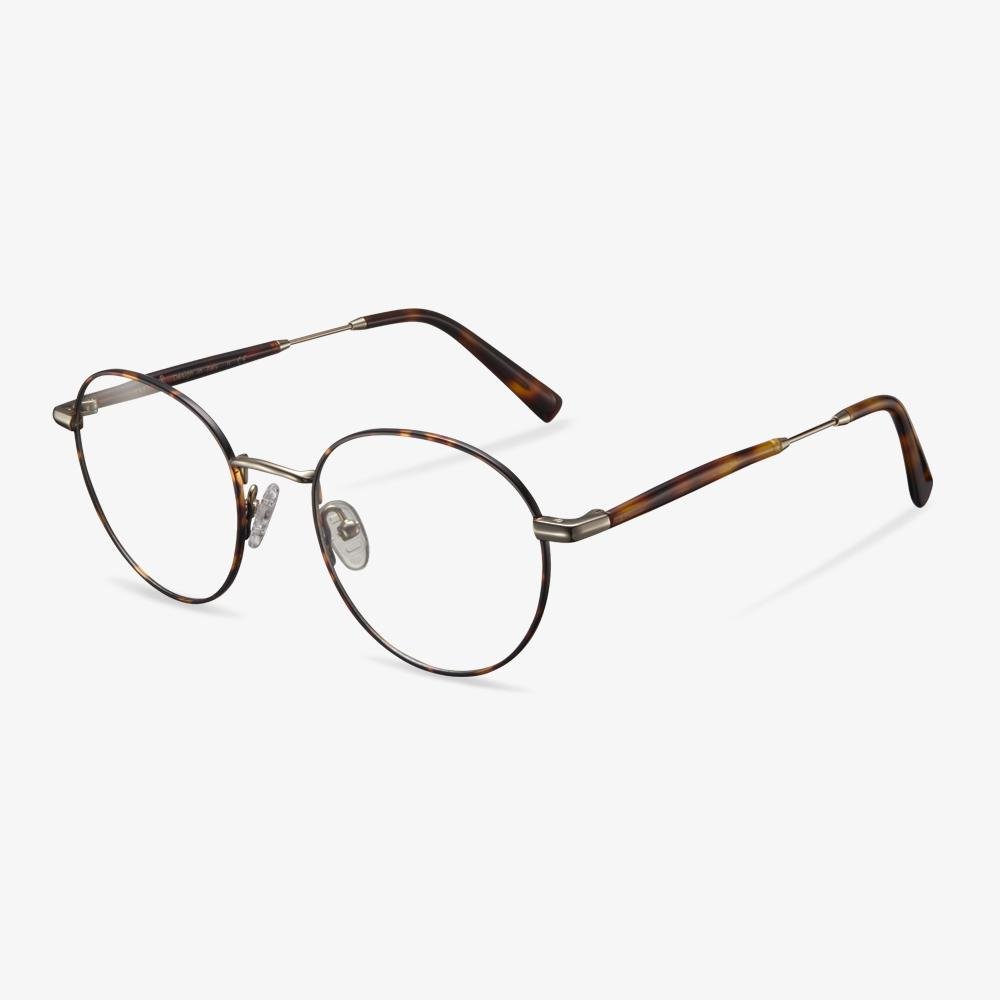Blue light blocking glasses lenses and common glasses lenses have different colors.
The real blue-light-blocking glasses should be yellow. Based on the primary principles of optics, the light reflected from the lens is the light that resists the same color as it. As the name indicates, blue light is to prevent the reflection of blue light. Remove blue light, and all the red, yellow, blue, and green in visible light is yellow.
What Is Progressive Lens?
Progressive lenses, also called multifocal lenses, have three prescriptions in one pair of glasses. So, it allows you to see near, middle distance, and far objects without changing your glasses. The progressive lenses are designed for people who are over 40 years old who are both nearsighted and farsighted. The progressive lenses come with the following features:
- There is no distinct line between all visions(near, intermediate, and far).
- Most popular lens for anyone with presbyopia who wears
- Expanded intermediate zone for better computer vision.
From the above information, you may have known the differences between bifocal lenses and progressive lenses. As for progressive vs bifocal lenses, which one is better? It is difficult to judge because each of them has unique features. So, if you do not know choose which, you can listen to the eye doctor.
Cellulose Acetate
Acetate is a kind of thermoplastic resin obtained by esterifying acetic acid to acetic anhydride under the action of a catalyst. Acetate is resistant to water, gasoline, mineral oil, and lipids, weak alkaline solutions, and acids, excellent weather resistance, not resistant to ethanol, strong acids, and strong alkaline solutions. During thermoforming, it is very necessary to dry the material before forming. Acetate was born in the early 20th century, and was successfully trial-produced and industrialized by the UK in the early 1920s. At present, it is the second-largest variety in cellulose fiber after viscose fiber. Acetate can be used to make textiles, cigarette filters, film bases, and plastic products.
How to determine whether progressive lenses are worn correctly?
Once your glasses are back from the lab, the optometrist will let you put them on for an audition and make final adjustments to make sure they fit. If the prescription is not in the center of the lens, it will make it difficult for you to see clearly. The key is that the lenses match the wearer's eyes, especially the pupils. Before ordering a new lens, the optometrist takes two measurements: pupil distance and fitting height.
Which sunglasses are best for driving, polarized sunglasses or non-polarized sunglasses?
Polarized and non-polarized sunglasses are the same in the ability to protect against ultraviolet rays. But when you work as a driver, in addition to the front of the sun, sometimes there are highway road reflective lights, other car body reflective lights, and so on. Glare will make people's eyes uncomfortable and fatigue, and affect the clarity of vision, stimulating the eyes. Polaroid lenses can filter out light from different angles, so when you driving, is best to wear polarized sunglasses.
Why are eyeglass frames are so expensive?
Plastic frames are often used for rimless glasses, but they are not very resistant to corrosion and break easily. The plate is a new type of plastic, and it is light and has high hardness, not easy to deform, but the surface is easily corroded by sweat. TR90 has features of wear resistance, good chemical resistance, solvent resistance, weather resistance, not burning, high-temperature resistance. Plastic steel does not contain any metal, but it is a kind of high-strength molecular material, lighter than TR90. They have a higher level in corrosion resistance and strength and other aspects. The frames made of good materials are more comfortable, durable, and textured in daily wear, and will not cause skin allergies. Plate, titanium, TR90, alloy are the most used materials on the market at present. The price is in dozens of yuan to hundreds, thousands of yuan.
Eyeglass pinches your nose.
Not only can a pair of glasses that pinch your nose be uncomfortable, but chronic stress can also lead to headaches or migraines. How you solve this problem depends on your frame material. If you're wearing a metal frame, just use your thumb to widen the plastic nose pad until the frame fits comfortably. If wearing plastic frames, after soaking the glasses arm in warm water for 30 to 60 seconds, gently press the glasses arm outward to make the glasses more comfortable. If your glasses continue to clamp your nose after adjustment, seek help from a professional optician.





